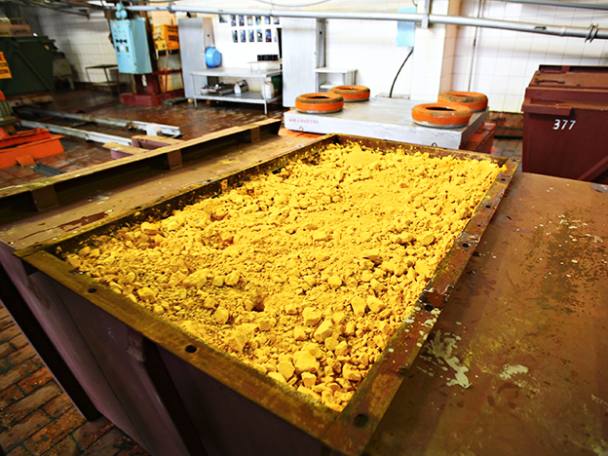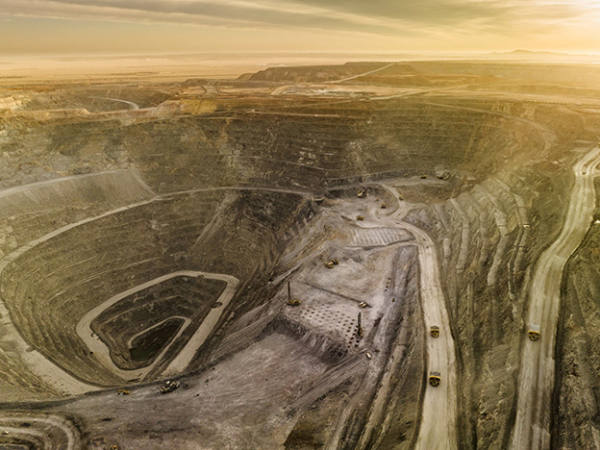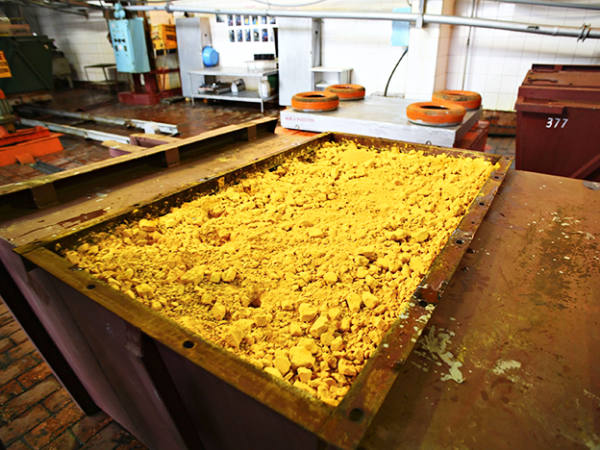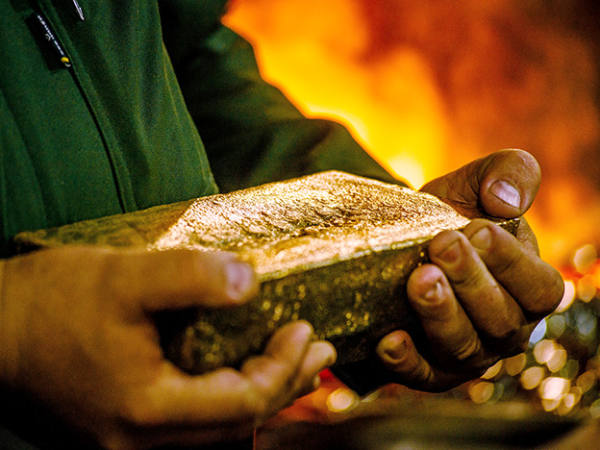If you said you were a uranium bull four years ago, you'd have been categorised as an oddball. It's a market that has been written off for well over a decade, especially as the prevailing narrative has been that nuclear power is dangerous, and the fat-tail risks here can be disastrous, as the world saw at Chernobyl and Fukushima.
And that’s the problem with being a contrarian. Everyone wants to be one, but nobody wants to look wrong. But being wrong is what contrarians are – at least in the view of the overall market. The reality is that, in financial markets, doing what the average market participant does will result in average market participant results. Therefore, you have to be willing to look wrong sometimes if you want to take an alternative view. And if that alternative view is successful, it can be highly remunerative.
However, don’t make the mistake of blindly taking the opposite view thinking that you’re being a contrarian. Being a contrarian is not doing the total opposite of everyone else (although doing the total opposite is often part of being a contrarian), but rather thinking objectively. This will bring you to different conclusions than the herd and to different courses of action.
The last uranium bull market
The last uranium bull market started almost 20 years ago, in 2006. A rockfall in the underground production area of Cameco’s (CA:CCO) Cigar Lake mine caused a flood, and production had to be suspended.
The company thought that closing the bulkhead doors would stop the water inflow and protect the mine, but unfortunately one of these doors didn’t seal properly and Cameco eventually decided that it had no option but to let the water flood the mine fully.
Cameco was, at the time – and still is – one of the biggest producers of uranium on the planet, and Cigar Lake was once a world-class producing asset. The news of a delayed shutdown in production caused a supply deficit and saw prices explode from the low $30 levels to as high as $140 – a more than 400 per cent increase.
Source: https://www.cameco.com/invest/markets/uranium-price
The effect this had on the industry was unprecedented. Because of that one bulkhead door, many unprofitable miners became hugely cash-generative businesses, and it sparked a mad gold rush into the sector with waves of speculative capital investing in and buying up uranium stocks.
Money was thrown into anything uranium-related (not unlike the bitcoin and crypto craze in 2020) – but, like every cycle, it came to an end.
The prices of uranium were already coming off, but it was the Fukushima disaster in 2011 that really put the boot into the last uranium bull market.
The uranium market was affected instantly. Japan cancelled its entire nuclear energy strategy almost overnight.
Germany followed not long afterwards, then Switzerland, then Belgium. Spain banned the construction of nuclear power, Taiwan’s president called for a reduction in its reliance, and a year later many countries (including Australia, Austria, Denmark, Greece, Ireland, Italy, Malta, Portugal, Malaysia and Norway) either had no nuclear power reactors and were opposed to them.
Even though there is an element of risk in all energy projects – look at how many oil disasters we've had over the years – following the Fukushima incident and the global reaction, funding for uranium exploration and development evaporated. As a result, there’s been a grand total of zero new mines coming online since the last bull market. The uranium spot price has traded well below the cost of production for many years, meaning that only those bold and/or crazy enough were willing to invest.
It’s taken more than a decade to work off this excess supply, but in 2021 we saw the first green shoots.
Sprott Physical Uranium Trust (SPUT) – an at-the-market vehicle – was set up to take the money it receives from investors, buy up loose pounds of uranium and then store it. Why does this matter? Because the uranium spot price needs to be well above $60 to even bring existing assets back into production and to make it economically viable for new projects to be developed.
And demand is increasing. China’s new five-year plan means there will be a 40 per cent increase in nuclear capacity by 2025, and grid problems in the US, Japan and Europe show that a reliable and low-carbon source of power is needed.
In fact, US utilities have around 200mn pounds of unfilled requirements through to 2028.
Even Cameco, the world’s largest publicly traded uranium company, is satisfying demand by buying up uranium in the spot market rather than producing from its own mines at low levels. It wants to save its reserves for when prices are higher. This is a clever allocation strategy by management, as not only does the company help shift excess supply from the market, but it does so by using cheap supply and not its own.
The Russo-Ukrainian war has exacerbated the recent energy price rises, with Russia using gas as a weapon. This caused price spikes in an already failing energy market that was too heavily reliant on fossil fuels. And while the idea of renewable energy is great, at the moment they make up too little of the energy grid to be able to switch off fossil fuels entirely.
The answer to managing this energy transition is nuclear. It has to be. It’s safe, always on, and cost-effective. The EU has mandated that nuclear energy be considered green and encourages investment (classing it as a sustainable investment). Even Greta Thunberg has spoken positively about nuclear energy. And despite Germany incredulously switching off its last nuclear power station in April earlier this year (at a time when hot showers were being turned off in gyms to save energy), the global sentiment towards nuclear energy is changing. With demand outstripping supply, once the loose pounds of uranium are mopped up from the market, then the price will start to move north.
A further potential catalyst is Kazakhstan, which provides more than 40 per cent of the world’s uranium. Last year, unrest in the country caused the uranium price to rise and equities to rally on the possibility of there being disruption to supply. Although many have now forgotten about this, it’s worth bearing in mind for the uranium market.
How to trade the uranium bull market
There are several ways to trade the new uranium bull market. Perhaps the cleanest way to play the uranium bull market is London-listed Yellow Cake (YCA).
This is an investment vehicle that buys and stores physical uranium in warehouses in safe jurisdictions such as France and Canada. There is no exploration or production risk here as the fund exists only to buy and store uranium. The company has an agreement with Kazatomprom to buy at a specific price before announcing it to the market in order to avoid front-runners. Management here has shown itself to be adept at capital management, having raised money when the price was above net asset value (NAV) and buying shares back when the stock traded at a discount to NAV.
There will always be a cost to store uranium in warehouses, but if you take the view that the uranium price will rise, then the company that buys and stores the physical product is the safest way to trade this view. Anyone wanting exposure to this market without the risks of an operating company will find Yellow Cake (along with its Canadian cousin Sprott Physical Uranium Trust) is the best fit.
HANetf offers the Sprott Uranium Miners UCITS EFT (URNM).
Aura Energy (AURA) is a London-listed uranium exploration company with its Tiris asset listed in Mauritania, discovered in 2008. As the market was already coming off the boil, and the project was not economical, it’s only now that investment has continued, with first production due in 2024.
The company raised over $10mn in May with the goal of progressing this asset to the development and identification of new higher-grade, low-cost resources in the Tiris region.
One benefit of the Tiris project is that it has shallow, flat-lying surface mineralisation. It means there is no drill or blasting required, or crushing and grinding. With an all-in sustaining cost of $29.81lb, this looks favourable towards the current uranium price of $60.
That said, Aura is a pre-producer and inevitably carries risk. At the moment, there are no revenues and the company has so far been reliant on external cash injections through equity placings. The story may be promising, but remember that many junior mining companies come to the stock market and few ever achieve the goal of production.
For those who want real upside (and real risk), Berkeley Energia (BKY) may give them the thrills they’re looking for. The board of the Nuclear Safety Council (NSC) in Spain issued an unfavourable view for a necessary permit in July 2021 that is required to commence full construction of the Salamanca mine. A mine that is not allowed to mine, is, well, not ideal, but with sentiment in Europe favouring nuclear and the company noting that it has had more than 120 permits and favourite reports by relevant authorities at all levels, from local to European Union, it hopes this decision can be overturned.
This company is highly speculative, and without the relevant permits could end up not going into production, which is likely to have a material negative impact on the share price given the lack of revenues and reliance on tapping shareholders and new investors for funding.













